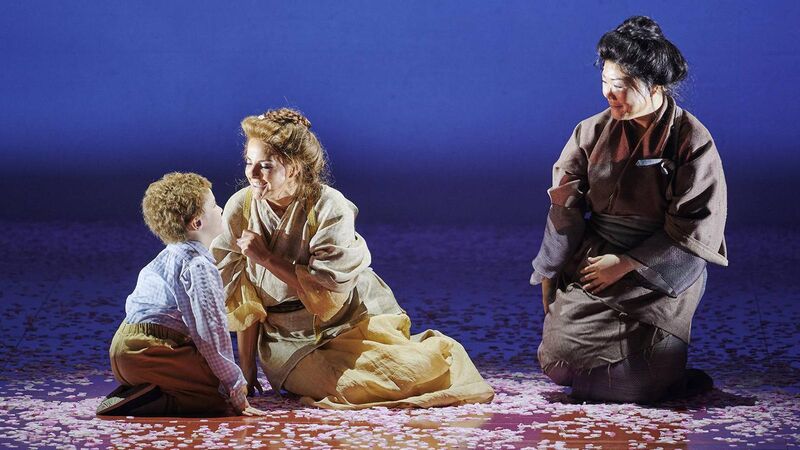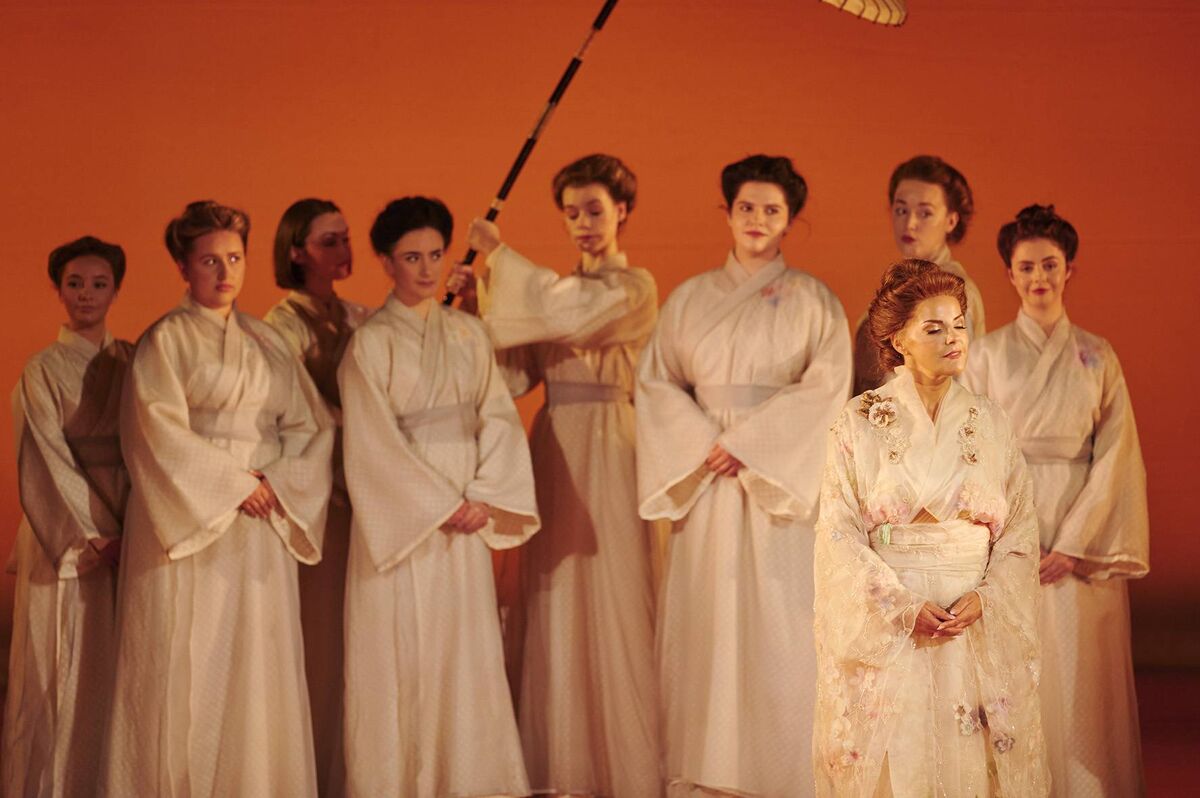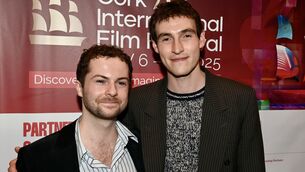Opera review: Solid production of Madama Butterfly eschews any risky flutters

Ewan Gaster, Celine Byrne and Hyona Kim in Irish National Opera’s Madama Butterfly. Picture: Ros Kavanagh
★★★☆☆
It’s the second time since 2019 that Irish National Opera has taken on Puccini’s ever-popular this time in a co-production with Scottish Opera. Like its predecessor, this is an elegant, handsome affair – a “classic” take not so much in the sense that it’s unmissable, but more in the sense that it never dares to rock the boat. It’s beautifully mounted and sensitively sung, yes, but one can’t help wishing it had shown a bit more directorial bite.
After all, this is a story of exploitation and delusion, laden with no-nos: racism, misogyny, Orientalism. Lieutenant BF Pinkerton, an American naval officer, enters into an arranged marriage with a poverty-stricken 15-year-old Japanese girl, Cio-Cio San, isolates her from her family, impregnates her, and buggers off back to the United States to find himself a “real” wife. It’s a sordid colonial arrangement, and surely we should loathe this wretch – or at least feel the shock of his casual cruelty.
Director Daisy Evans takes a different approach, however. Her staging is cinematic in tone – an apt match for Puccini’s music, and its influence on Hollywood – and she frames the action as a dream or memory play, seen through the eyes of Butterfly’s grown son, Sorrow (a silent, watchful Michael Mullen). He haunts the scenes of his own childhood, observing his mother’s tragedy.

It’s sometimes a distraction, but in moments, such as the entr’acte – where Mullen and the younger Sorrow, played with touching openness by Ewan Gaster, share the stage – the device has a pleasing novelty.
Otar Jorjikia offers a polished, suavely sung account of the “roving Yankee” Pinkerton, who’s always ready to “cut loose” on his sham marriage. Dramatically, he’s all surface charm, and like Teflon for our disapproval. It just doesn’t seem to stick. The first act drags a little, even by operatic standards. But the emotional heft comes later as Butterfly’s long, futile vigil unfolds.
The story is what it is: a woman waiting years for something we all know will never happen. Even when Pinkerton returns, new wife in tow, he cannot face Cio-Cio San.
So why do audiences keep returning to ? The answer lies in the music and the singing. The pacing risks becoming dramatically tedious, but Puccini’s score remains sumptuous and beautiful as ever, with Fergus Sheil conducting here. Celine Byrne, in the title role meanwhile, is radiant. She delivers both on the demands of the score and the drama – a sincere portrait of misplaced faith. With “Un bel dì,” that aria of doomed hope, she earns her own round of applause on opening night.
Designer Kat Heath takes her cue from the opera’s opening lines, where Pinkerton marvels at the Japanese house’s sliding walls – “they go back and forth at will.” Her set becomes a living geometry of shifting horizontal and vertical screens, sliding and intersecting in kaleidoscopic patterns. It’s visually dynamic, sometimes beguiling, though opening-night gremlins left a few transitions slightly askew. Still, the staging’s fluidity contrasts with a drama that remains somewhat static. The heroine is, after all, “like a trapped bird”.
For its many fans, this will be an operatic comfort blanket – visually appealing, and beautifully sung. A production for the converts then, but not one to win over any opera sceptics.
- Until November 8



